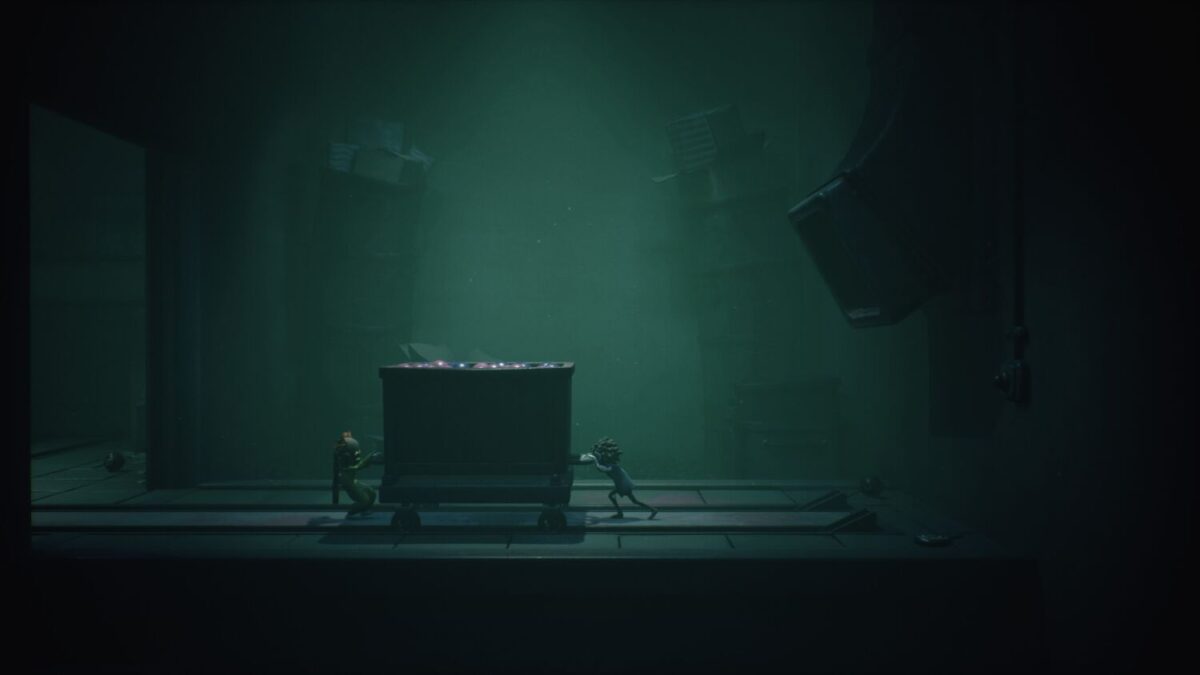While niche, the horror puzzle-platformer sub-genre has garnered a fervent following as a more accessible (re: less scary) alternative to full fledged horror games, and although the scene has been largely dominated by indie titles or older releases like 2010’s Limbo, the Little Nightmares franchise has stood the test of time, becoming synonymous with the genre since its debut in 2017.

Originally developed by Tarsier Studios, the first game was an instant hit among fans and would go on to spawn a prequel four years later, which marked Tarsier’s final game in the franchise after it was acquired by Embracer Group. Supermassive Games, best known for its narrative-driven horror games like 2015’s Until Dawn and 2022’s Quarry, has taken up the mantle for its sequel, Little Nightmares III, and also finally brings the fan-requested co-op feature to the franchise, although with a catch (more on this later).
Much like the two games that came before, Little Nightmares III embraces the themes of childhood fears and vulnerability, although this time, it’s focused on two new characters, best friends Low and Alone, as they try and escape The Nowhere.

Once again, storytelling is left largely to the player’s interpretation, leaving them only the briefest of exposition that the duo are venturing in search of an undisclosed location on a scroll, filling the gaps in its narrative with symbolism instead, with each foe encountered on their adventures being a distorted representation of the duo’s past.
With the introduction of two new main characters, the sequel places a greater emphasis on their relationship, highlighting the strength of their friendship through the pair’s actions in the absence of voice lines. Nothing is as it seems, though, and much like past games, Little Nightmares III does feature a major twist, but, without spoiling too much, the game makes it far too obvious early on, diminishing its big reveal and lessening the impact of the game’s overall plot in the process.

The Little Nightmares franchise has always been known for its thought-provoking puzzles and thrilling monster encounters, and it’s no different this time around. Players will once again explore the twisted landscapes of The Nowhere in either solo or co-op, working together to overcome puzzles or nightmarish foes in order to escape.
With its new dual-protagonist focus, Little Nightmares III does offer some shake-ups to its well-established formula. Low and Alone each possess a unique tool, a bow for the former and a wrench for the latter, requiring an additional layer of cooperation when puzzle-solving or platforming.

These tools aren’t just for opening new paths, and as described by our preview, Little Nightmares III now features a greater emphasis on combat, with the pair having to use their tools in unison to defeat smaller enemies. It won’t be a Little Nightmares game without the feeling of vulnerability, however, and these tools are largely ineffective against the game’s larger foes, with gameplay instead transitioning to the traditional combination of stealth and chase sequences.
As a package, the gameplay presented in the sequel will largely be what fans expect, although the title is let down by two major missteps.

Firstly, with regard to its touted co-op feature, Little Nightmares III limits this purely to online play only, meaning those who were looking forward to playing it with their friends and family via couch co-op will be sorely disappointed. Although the game tries to make up for this shortcoming with its Friend’s Pass, which allows players to invite friends at no extra cost, this still requires two separate console systems, and with a lack of crossplay, this makes planning for a co-op session an even more frustrating experience.
The omission of local co-op functionality is a baffling decision for sure, especially considering how the game requires precise timing from both parties to overcome some obstacles. Certain levels do feature portions where Low and Alone are completely separated, which does explain why a traditional shared-screen co-op format wouldn’t work, but these issues could have been easily negated by implementing a split-screen format instead.

To make matters worse, the game does not feature a voice chat function, instead requiring players to use external tools like Discord. And with communication being such a big part of the co-op experience, this just feels like another easily avoidable hurdle for players to overcome.
Playing the game solo isn’t without its issues either, largely due to the nature of the AI-controlled teammate. As a pre-programmed entity, the AI often performs required actions well ahead of time, such as ducking into a hiding spot or sprinting towards the exit, even before the threat makes itself known, which removes some of the tension of figuring things out on your own. Along the same lines, the AI will also sometimes solve environmental puzzles entirely on its own, and although a rare occurrence, it still makes it far too easy for the player.

Perhaps Little Nightmares III’s biggest downside, however, is just how short the experience is. The game is split into four chapters, and can be cleared in roughly four hours, a minuscule playtime, especially considering its S$50 price tag. In comparison, Little Nightmares II was one and a half hours longer despite costing S$10 less on launch.
One could argue that the presence of two main protagonists opens the potential for replayability, but in practice, apart from being able to use the different tools, this is far from the case, as the game’s narrative beats or puzzle solutions remain the same no matter the character.

It’s a shame, then, since what little that is on offer here is truly captivating, especially in terms of Little Nightmares III’s look and feel. Each of the game’s four chapters offers a wholly unique location to explore, from a dilapidated carnival to a twisted candy factory, each providing no shortage of tense moments as players run and sneak past the various Residents (the name of the humanoid monsters in the franchise).
And it’s the designs of these monstrous beings that continue to be the highlight of the series, with Little Nightmares III featuring four unique “boss” type creatures – one per chapter – for players to encounter. In series tradition, these Residents are the embodiment of the word creepy, often featuring warped body features, such as The Supervisor, an elderly woman sporting thick beehive-shaped grey hair and six elongated arms. Each of these foes also usually features different “phases”, able to contort their bodies in certain ways to switch up their actions as a player progresses, with the thrill of discovering the next major foe being one of the most exciting parts of the whole experience, as short as it might be.

Much like waking up abruptly from a dream that you were wholly engrossed in, Little Nightmares III might have taken its namesake a bit too seriously, as despite featuring unique and interesting locales with terrifying foes to encounter at every step of the journey, the title’s overall enjoyment is still marred by its poor implementation of co-op, and most importantly, its disappointingly short play time, making it a fleeting nightmare that ends just as things are starting to get interesting.
GEEK REVIEW SCORE
Summary
Despite some wasted potential with its implementation of online-only co-op, Little Nightmares III still offers the same horror platforming that fans are pining for. It’s just a shame that the game is painfully short.
Overall
7.5/10-
Gameplay - 8/10
8/10
-
Story - 7.5/10
7.5/10
-
Presentation - 9/10
9/10
-
Value - 6/10
6/10
-
Geek Satisfaction - 7/10
7/10













